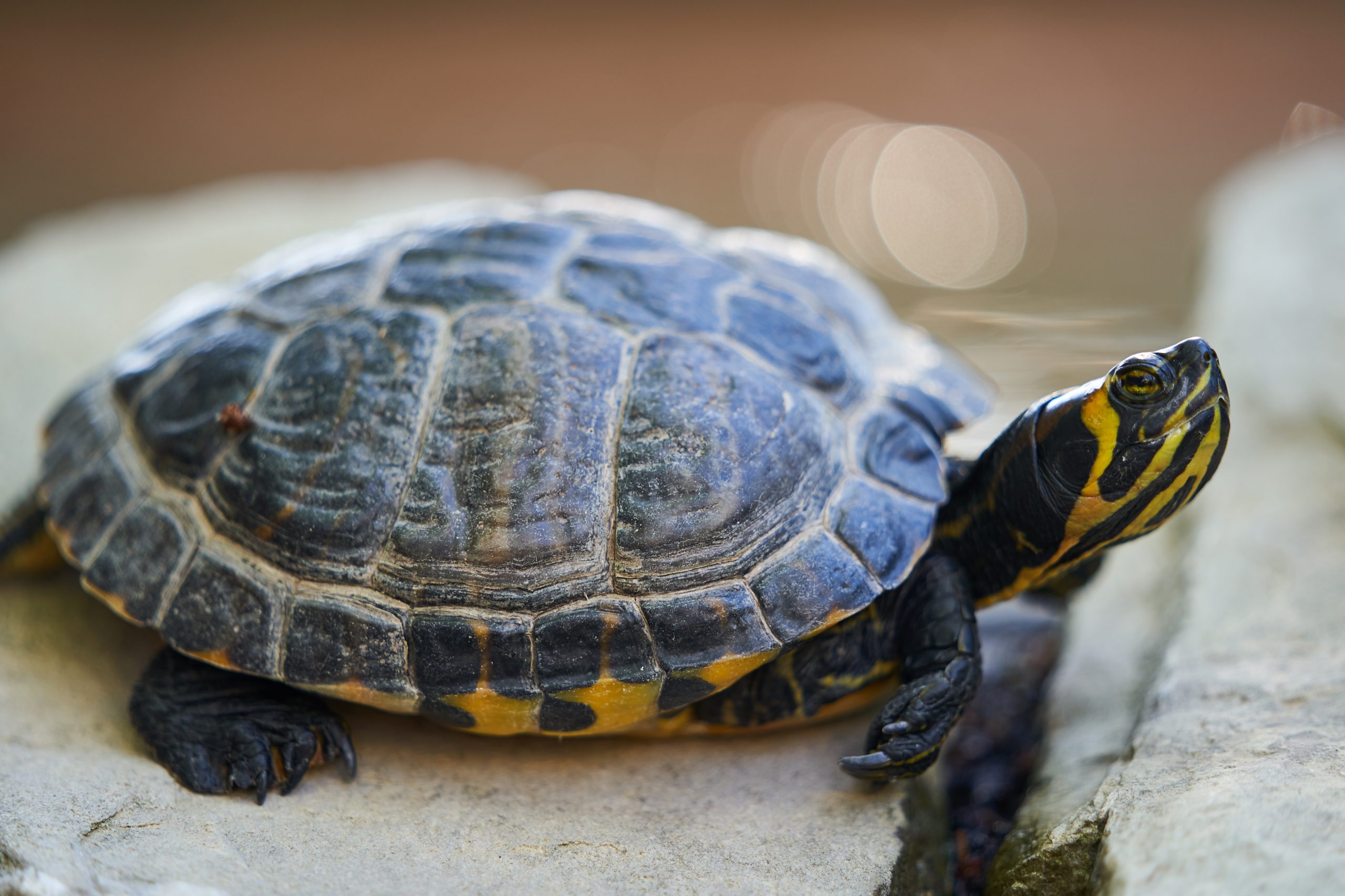Yellow-Bellied Slider
Trachemys scripta scripta
As the springtime weather moves in, you’re likely to see more native wildlife emerge from their winter slumber. Georgia is home to 27 types of turtles, and one of the most abundant turtles is the yellow-bellied slider. This semiaquatic turtle species lives in freshwater lakes, ponds, swamps, rivers, and any other slow-moving bodies of water. You may see them basking in large groups on the shore of their water-based home!
The yellow-bellied slider is recognizable by its yellow underbelly, or plastron, and striking yellow marks on its face. In addition to its yellow features, the top of its shell, or carapace, is dark brown or olive green. It is considered a large turtle reaching a maximum length of nearly 12 inches, but averages around 8 inches.
Now that it is April, yellow-bellied sliders are in nesting season. The nesting season typically starts in early spring and ends in the late summer. Female yellow-bellied slider turtles will use their back feet to dig nest holes to lay eggs, where they remain until they hatch. The number of eggs that the female slider will lay depends on the size of the turtle– that number can be anywhere from 4 to 12 eggs. After about 3 months, the eggs will hatch, but the hatchlings stay in the nest throughout the coming fall and winter before emerging and going to a nearby water source to begin eating. The main food sources for these hatchlings include insects, dead fish, tadpoles, and other meat that they are able to consume.
Adult yellow-bellied sliders enjoy a carnivorous diet (eating only meat), but are considered omnivorous (eating both meat and vegetation) and can live on a strictly herbivorous diet (eating only vegetation) if that is all that is available to them. The plant part of their diet can include algae, leaves, stems, roots, fruits, and seeds.
Did you know that these turtles are long-lived? Researchers at the Savannah River Ecology Laboratory have conducted research on native Georgia turtles for more than 25 years, and have been able to conclude that yellow-bellied sliders can live for more than 25 years– which is a similar characteristic to other many other turtle species!
The Sweet Gum trail is home to several species of turtles, aquatic and terrestrial, and is the perfect place to watch them bask. On a warm, sunny day, you will be able to see a cluster of slider turtles on fallen logs and on the shore near the pond. Be careful, though; they are skittish and if you get too close, you may spook them right back into the water! For more information on yellow-bellied sliders, check out this fact sheet from the Savannah River Ecology Laboratory or the Virginia Herpetological Society website.

